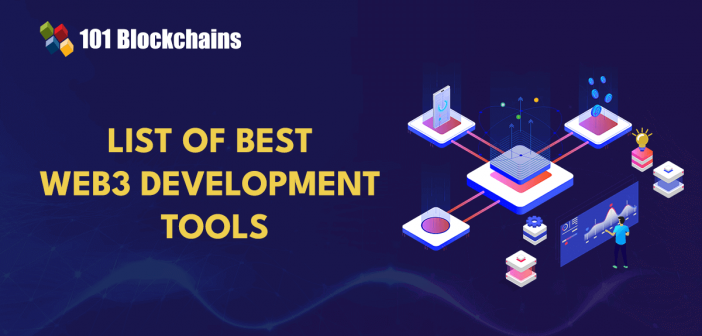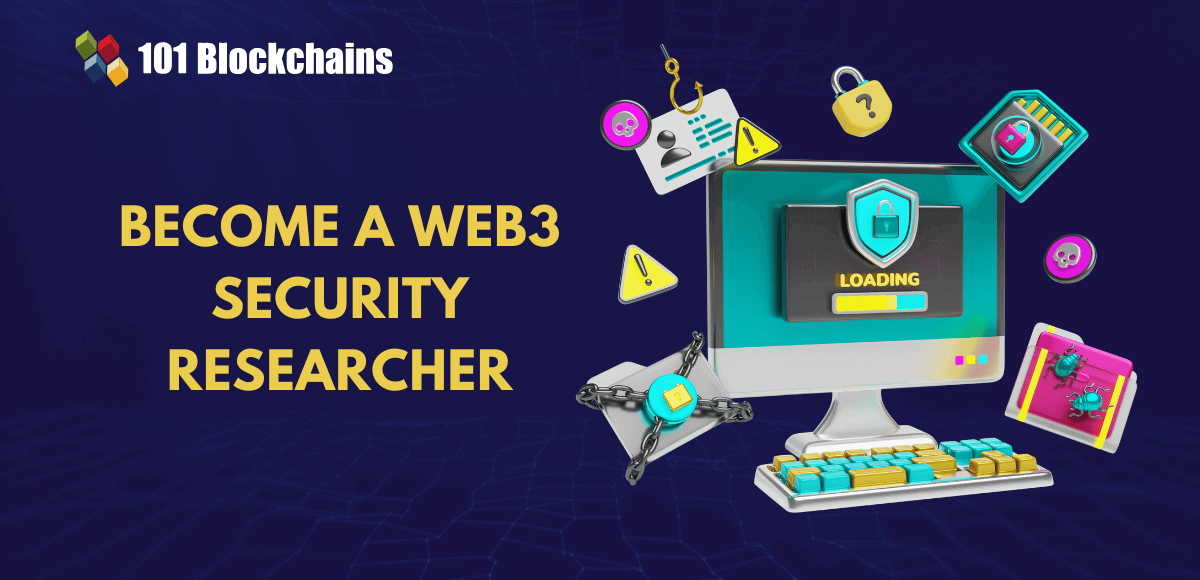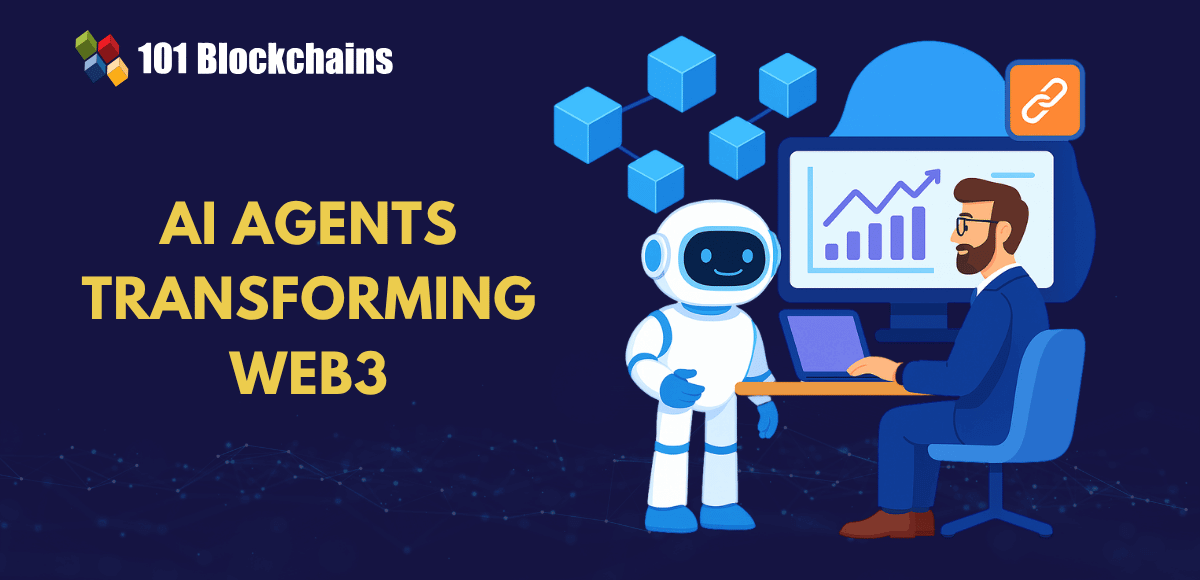Learn how blockchain truly works, master key definitions, and uncover what makes smart contracts so "smart." Dive into the fundamentals, gain valuable insights, and start your blockchain journey today!

- Web3
James Howell
- on March 15, 2024
Best Web3 Development Tools for Blockchain Developers
Web3 development has turned into a complex industry with the rise of diverse types of interconnected tools, frameworks, and applications. The search for best web3 development tools is one of the major trends in technology right now. Web3 is capable of building NFTs, the metaverse, DAOs, and a completely new version of the internet itself. As a web3 developer, you need to familiarize yourself with the top development tools in web3 and use them to their full potential.
Web3 is not only the future of the internet but also the next step for businesses to seek new opportunities. How can you choose the top web3 development tools for your project? It is important to understand the important implications of leveraging new trends and the classification of different tools in the tech stack. Let us find out more about choosing the best Web 3.0 development tools.
Why Should You Find the Best Tools for Web3 Development?
Web3 technologies have the potential to solve a wide range of problems by introducing new business models, decentralized supply chain applications, and peer-to-peer payments. A clear overview of your objectives in web3 development can help you navigate a web3 development tools list with ease.
There are many reasons why you can participate in web3 development and choose the right tools for the job. Web3 offers multiple choices to resolve real-life problems for businesses and consumer issues. The right tools for web3 development can help you create solutions such as,
- Metaverse apps that support use cases in branding, social media, marketing, events, and business.
- NFTs or non-fungible tokens can help in monetizing the creator economy and empowering a completely new range of utilities.
- You can also use web3 development tools to create solutions for efficient cross-border payments.
- Decentralized autonomous organizations, or DAOs, can help raise funds for startups and introduce new governance models for businesses.
Build your identity as a certified blockchain expert with 101 Blockchains’ Blockchain Certifications designed to provide enhanced career prospects.
Groups of Tools Used in Web3 Development
Based on the type of application you want to build in web3, it is important to identify the tools and technology stack you want to use in web3 development. Here is an outline of the different variants of blockchain developer tools that you can use in web3.
Layer 1 blockchains can serve as the base network on which you build web3 solutions. Some of the notable examples include Ethereum, Polkadot, and Solana.
Layer 2 blockchains are another important addition to the web3 development landscape. They help in extending the scalability of blockchains across a broader collection of use cases. The notable examples of Layer 2 blockchains include ZK Synch and Polygon.
Web3 development frameworks such as Remix, Foundry, and Hardhat are also effective choices for developing and testing apps.
Smart contract development languages such as Solidity and Vyper also qualify as core components required to create web3 apps.
RPC service providers are also responsible for providing self-managed node services to ensure performance improvements.
Curious to develop an in-depth understanding of web3 application architecture? Enroll now in the Web3 Application Development Course
What are the Top Web3 Development Tools?
The discussion about best web3 development tools can bring you across multiple categories of tools. However, there are some options that stand out with distinctive highlights and unique functionalities for web3 development. Here is an overview of the essential requirements you need to create web3 apps tailored for the future.
-
Smart Contract Programming Languages
The first addition to a web3 development tools list is obviously the collection of smart contract programming languages. It is important to know that smart contracts serve as the foundation and pillars on which web3 stands. You can develop web3 apps only with the help of smart contracts to decentralize ownership. Which is the best programming language for creating smart contracts?
The answer would obviously point to Solidity, which is the most popular and dominant player in the smart contract development space. As a matter of fact, almost 94% of smart contracts have been created using Solidity. It is an impressive feat, considering the fact that many other smart contract development languages have entered the market with innovative advancements.
Solidity and Rust are the two prominent leaders in the smart contract development market. However, Vyper has emerged as a notable player among smart contract programming languages. Interestingly, Vyper has registered significant improvement in community engagement due to a problem with reentrancy locks.
The community turned up to offer the ideal solutions for improving Vyper. On top of it, Vyper has been introducing PRs for stateful modules and implementing competitive audits. Vyper can emerge as a formidable competitor to top smart contract programming languages with major improvements planned in its roadmap.
Curious to understand the complete smart contract development lifecycle? Enroll now in the Smart Contracts Development Course
-
Web3 Development Frameworks
Web3 applications rely on interactions with smart contracts and blockchain networks. You can find the answer to “How do I start web3 development?” by checking out how smart contract development is important for web3 developer tool collection. The process of developing smart contracts can be a significant challenge for beginners. For example, it takes time to learn a new programming language like Solidity. You must also pay attention to the fact that vulnerabilities in the smart contract code can lead to consequences such as high costs.
Interestingly, you can rely on web3 development frameworks that help you develop, test, and deploy smart contracts from one platform. Smart contract development frameworks ensure safer and more efficient web3 development, especially for beginners. The foremost entries among web3 development tools in this category include Hardhat and Foundry.
The two frameworks have been the most popular web3 development frameworks. Brownie still stands out as a productive framework, albeit with issues in performance due to its emphasis on maintenance. Apeworx has emerged as a notable competitor to Brownie with feature parity as a new Pythonic framework.
Hardhat is still the top favorite among web3 development frameworks. However, Foundry has emerged as a top destination for many new web3 projects for different reasons. For example, it offers enhancements in deployment approaches and in-built fuzz tests. Foundry also offers testing that is 20 times faster than other web3 development frameworks. Apart from the speed, new web3 projects turn to Foundry for security reviews and competitive audits.
In 2024, Foundry will be one of the top blockchain developer tools for developers as well as security researchers. Interestingly, Vyper has come up with a unique implementation similar to Foundry with the Titanoboa. It offers an ideal framework for testing and execution tailored to Vyper.
Web3 developers must also take note of the fact that one of the most popular web3 development frameworks, Truffle, has bid goodbye in 2023. It might have been the best framework to start web3 development, but it had to give way to new and advanced frameworks.
-
Web3 Wallets
Another common addition among web3 developer tools draws attention towards web3 wallets. As a matter of fact, web3 wallets have acquired some promising advancements to help dApp developers. One of the recent entries in a web3 development tools list is Rivet, by the Paradigm team. It allows developers to interact seamlessly with frontends as compared to traditional wallets.
At the same time, other popular wallets have also been going through some major improvements. For example, Metamask came up with snaps in 2023 that allow customization of your web3 wallet. Trezor launched the Trezor 3 hardware wallet as the most popular open-sourced hardware wallet for web3 development. As a web3 developer, you can also rely on multi-sig wallets like Safe to store your assets.
Learn the fundamentals, challenges and use cases of Web3.0 blockchain from Web 3.0 E-Book
-
RPC Node Providers
You cannot complete a list of web3 developer tools without mentioning RPC node providers. It is important to note that web3 development involves interaction with the Ethereum blockchain. RPC node providers are the top web3 development tools that help web3 applications connect with Ethereum or the layer 1 blockchain. You can leverage the functionality of RPC node providers in web3 development with an API key setup and an API endpoint. Some popular examples of RPC node providers include QuickNode, Alchemy, and Infura.
Web3 developers can find the same services from all RPC node providers. If you are a beginner in web3 development, then you can use the free plan of Alchemy. It can provide support for 5 deployed apps and almost 300,000,000 compute units in a month. On the other hand, QuickNode stands out with its support for more than 19 different blockchain networks. In addition, QuickNode also guarantees the fastest response time among all the RPC node providers.
Infura is a popular addition among best web3 development tools as it offers APIs as well as developer tools for beginners. For example, you can find development environments, Ethereum plugins, and smart contract templates on Infura. The popular web3 solutions developed using Infura include Uniswap, Compound, and Metamask.
Another prominent benefit of Infura is the support for integration with different ConsenSys tools. Web3 developers can use the ‘Truffle for VSCode’ extension to facilitate direct deployment to Infura in the Integrated Development Environment. In addition, Infura also offers private key management tools that help you avoid the concerns of exposure to sensitive information.
You can find tools for alerts and analytics on all the popular RPC node provider platforms. However, the decision to choose an RPC node provider would depend on your budget, your desired use case, and the tool stack you have selected for web3 development.
-
Smart Contract Essential Resources
Sometimes, building smart contracts is not enough to create web3 applications. You also need additional resources to improve the functionality of your web3 apps. The most popular web3 development tools in this category are OpenZeppelin and Chainlink. Both platforms have shipped out exceptional products in 2023, some of which have been dropped.
For example, the OpenZeppelin v5.0 was dropped recently. On the other hand, Chainlink made headlines by introducing Chainlink CCIP for bridging, Chainlink Functions for custom API calls, and Chainlink Data Streams to offer low-latency oracles.
OpenZeppelin is the preferred destination for finding the resources required to extend the functionality of Solidity smart contracts. On the other hand, Chainlink is a trusted platform for accessing Oracle services in web3 development. Chainlink CCIP can emerge as one of the top blockchain developer tools for improving interoperability.
It could lead to the creation of a new generation of cross-chain dApps. Solady has emerged as another top player among web3 developer tools for extending smart contract functionalities. It might have a smaller contract library than OpenZeppelin. However, Solady also includes thousands of gas-optimized contracts that can help new web3 projects.
Learn about the fundamentals of smart contracts & solidity with Solidity & Smart Contracts E-Book
-
JavaScript Libraries
It is practically impossible to think of answers to “How do I start web3 development?” without references to JavaScript libraries. The two most popular JavaScript libraries that help you interact with smart contracts include ethers.js and web3.js. The libraries offer similar functionalities to developers with different approaches.
For example, ethers.js relies on a split entity approach, with a wallet entity responsible for transaction signing and a provider entity. The provider entity is in charge of connecting to the blockchain network through a JSON-RPC URL.
Web3.js does not follow the split entity model and is an ideal JavaScript library for beginners in web3 development. The flexibility in web3.js has fueled the expansion of the community with inclusion of additional resources and observations.
As of now, ethers.js is the top choice of web3 developers for new projects. First of all, it offers better flexibility in interactions between RPC providers and wallets. Ethers.js is lightweight and also enables parsing of ENS .eth domains without the need for additional coding.
Build your fluency in Web3 and develop decentralized solutions with the world’s first Web3 Expert Career Path with quality resources tailored by industry experts Now!
Final Words
The review of the best web3 development tools sheds light on the different categories of web3 developer tools. Awareness of all the important web3 developer tools helps in understanding how each tool serves a distinct functionality in web3 development. The broad range of innovative use cases of web3 paints a favorable picture for web3 development in the long run.
You would need different tools such as smart contract programming languages, web3 development frameworks, and web3 wallets to create new web3 apps. In addition, RPC node providers and JavaScript libraries are also important tools to support web3 development. Find the best professional training resources on web3 development and learn more about top web3 developer tools right away.







